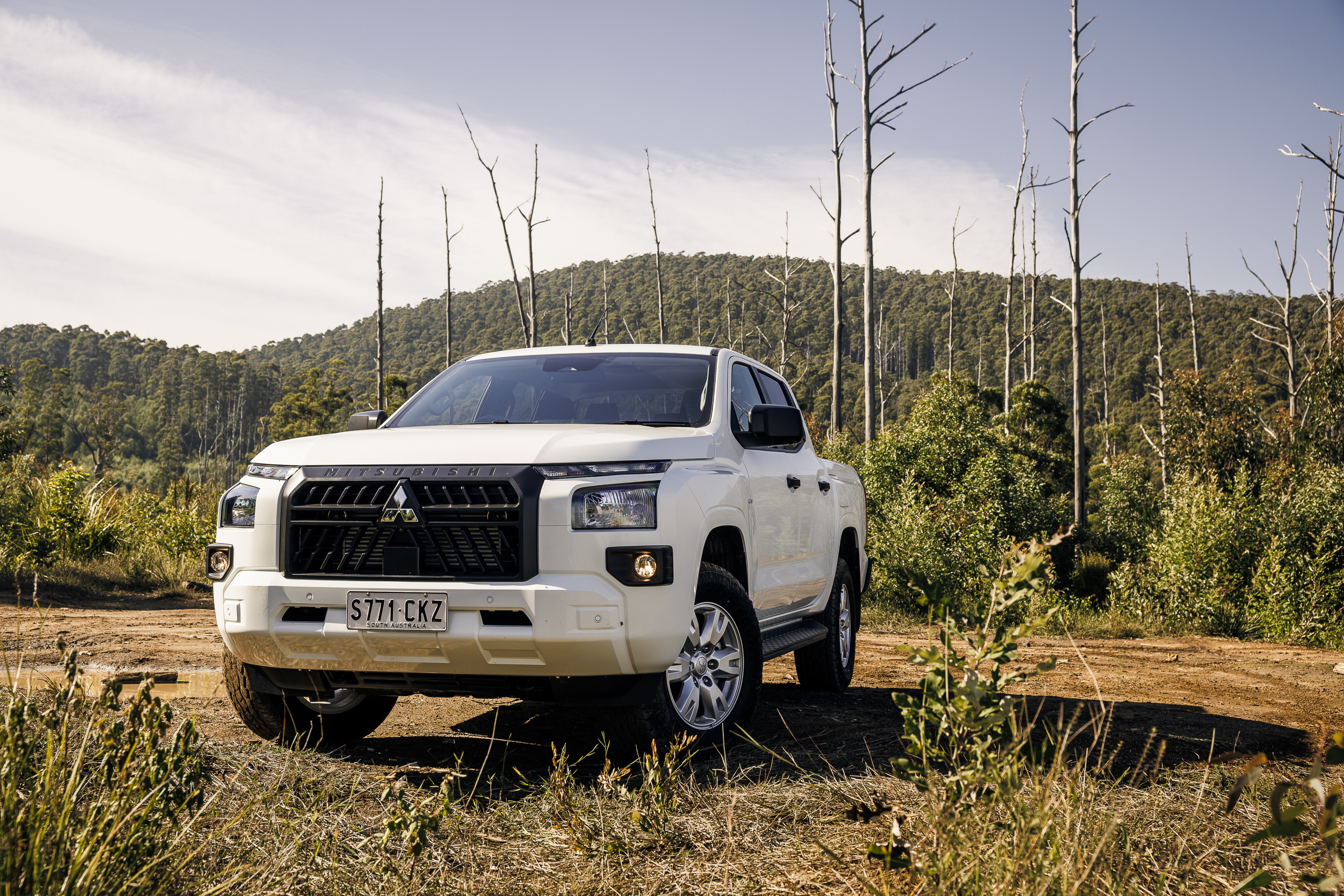
Things we like
- Markedly improved this generation
- Good balance between on- and off-road
- Leading warranty and after-sales support
Not so much
- No longer a value alternative
- Transmission can be rough
- Driver-monitoring system (though it has been scaled back)
The current, sixth-gen 2024 Mitsubishi MV Triton landed locally early in 2024, replacing the outgoing MR generation.
It launched with four familiar variants - GLX, GLX+, GLS and top-spec GSR - in club- or dual-cab configurations, with a six-speed automatic transmission standard across the board. However, the line-up is expected to expand with the addition of a manual transmission and an array of cab-chassis variants.
The bigger and better Triton is powered by a more powerful 150kW/470Nm twin-turbo four-cylinder diesel engine. It gets a reimagined interior and a suite of active safety systems. Let's take a closer look! 👇
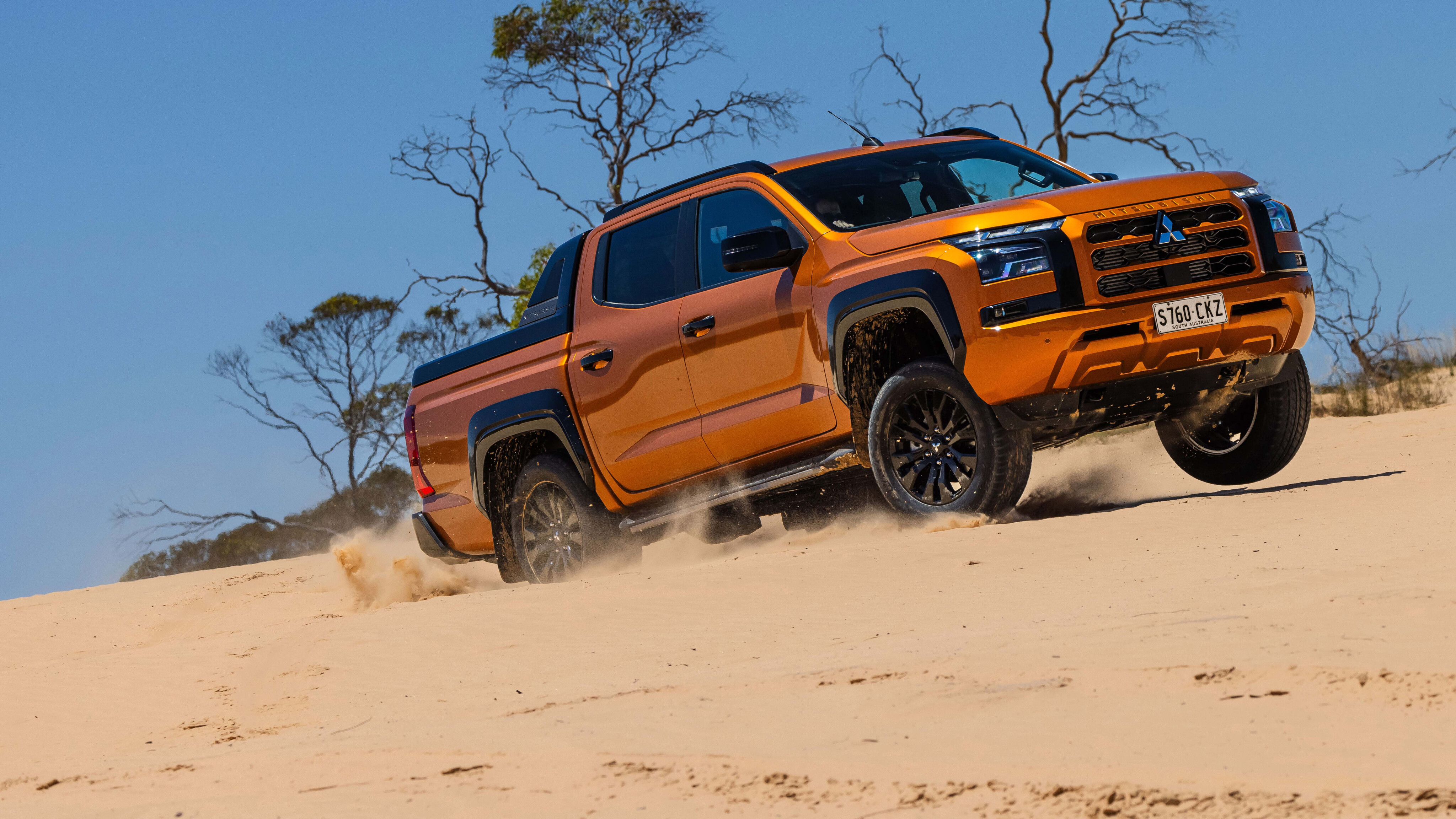
JUMP AHEAD
- Pricing
- What body styles are available for the Mitsubishi Triton?
- What features are standard in every Mitsubishi Triton?
- What key features do I get if I spend more?
- How safe is the Mitsubishi Triton?
- How comfortable & practical is the Mitsubishi Triton?
- How big is the tray/tub?
- I like driving, will I enjoy the Triton?
- Which Mitsubishi Triton engine uses the least fuel?
- What is the Mitsubishi Triton’s towing capacity?
- How long is the warranty and what are the Mitsubishi Triton's servicing costs?
- Which version of the Mitsubishi Triton does 4X4 Australia recommend?
- What are the Mitsubishi Triton’s key rivals?
Pricing
| Model | Pricing |
|---|---|
| GLX 4x2 dual-cab pick-up | $43,690 |
| GLX+ 4x4 club-cab pick-up | $50,340 |
| GLX 4x4 dual-cab pick-up | $50,940 |
| GLX+ 4x4 dual-cab pick-up | $53,290 |
| GLS 4x4 dual-cab pick-up | $59,090 |
| GLS Leather 4x4 dual-cab pick-up | $60,590 |
| GSR 4x4 dual-cab pick-up | $63,840 |
What body styles are available for the Mitsubishi Triton?
Mitsubishi Australia initially released the current Triton with one club-cab (GLX+) and six dual-cab pick-ups. The base-spec GLX is the only vehicle currently available with the option of 4x2; the rest of the models are all 4x4. All vehicles run an automatic transmission.
However, Mitsubishi has confirmed the line-up is set to expand with the addition of a manual transmission option and a selection of single-cab and cab-chassis variants.
What features are standard in every Mitsubishi Triton?
The features listed below are standard in the entry-level model and will appear in higher-grade models, unless replaced by more premium equivalent features.
| 2024 Mitsubishi Triton GLX features | |
|---|---|
| 17-inch steel wheels | Driver’s seat power lumbar support |
| 9-inch infotainment system | Vinyl flooring |
| Wireless Apple CarPlay | Manual air conditioning |
| Wired Android Auto | Two front USB ports (USB-A, USB-C) |
| Built-in satellite navigation | Two rear USB ports – dual-cab only (USB-A, USB-C) |
| Four-speaker audio system | Seat back pocket including phone and tablet storage – dual-cab only |
| 7-inch semi-digital instrument cluster | Front and rear parking sensors |
| Halogen exterior lighting | Rear-view camera |
| Black cloth upholstery | Tyre pressure monitoring |
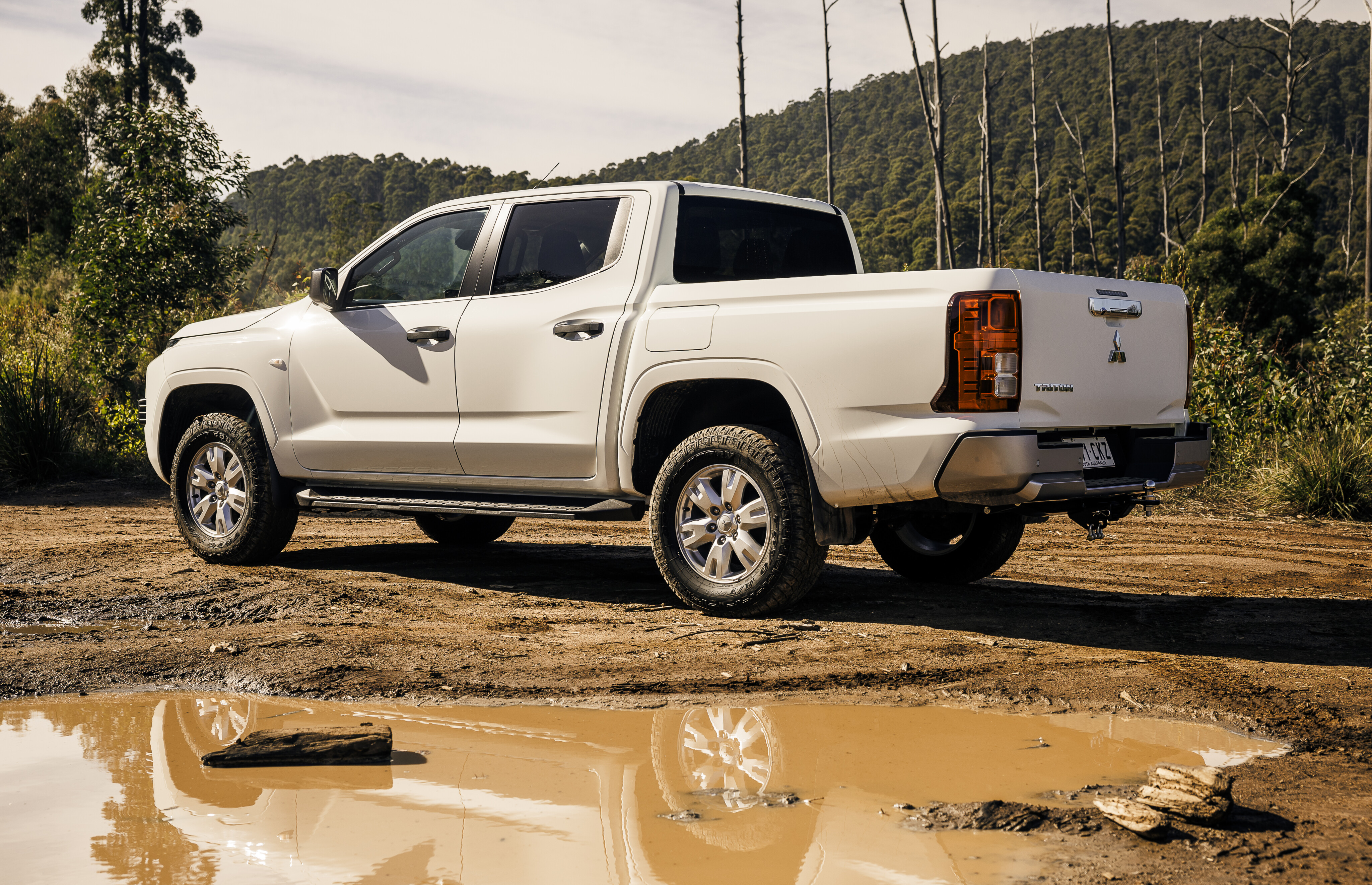
What key features do I get if I spend more?
The GLX+ adds:
| In addition to GLX | |
|---|---|
| 17-inch alloy wheels | Front fog lamps |
| Rear differential lock | Rear privacy glass |
| DAB+ digital radio | Reverse autonomous emergency braking |
| Side steps | 360-degree camera system |

Upgrading to a GLS adds:
| In addition to GLX+ | |
|---|---|
| 18-inch alloy wheels | Wireless phone charger |
| Super Select II 4WD system with 2H, 4H, 4HLc and 4LLC | Tray bed liner |
| Standard-duty rear suspension | Heated, electrically-adjusted side mirrors with LED indicators |
| LED exterior lighting | Mitsubishi-embossed gloss black grille |
| Dual-zone climate control | Terrain control |
| Keyless entry and push-button start | Hill descent control |
| Auto-dimming rear-view mirror | Soft-padded interior surfaces with silver accented stitching |
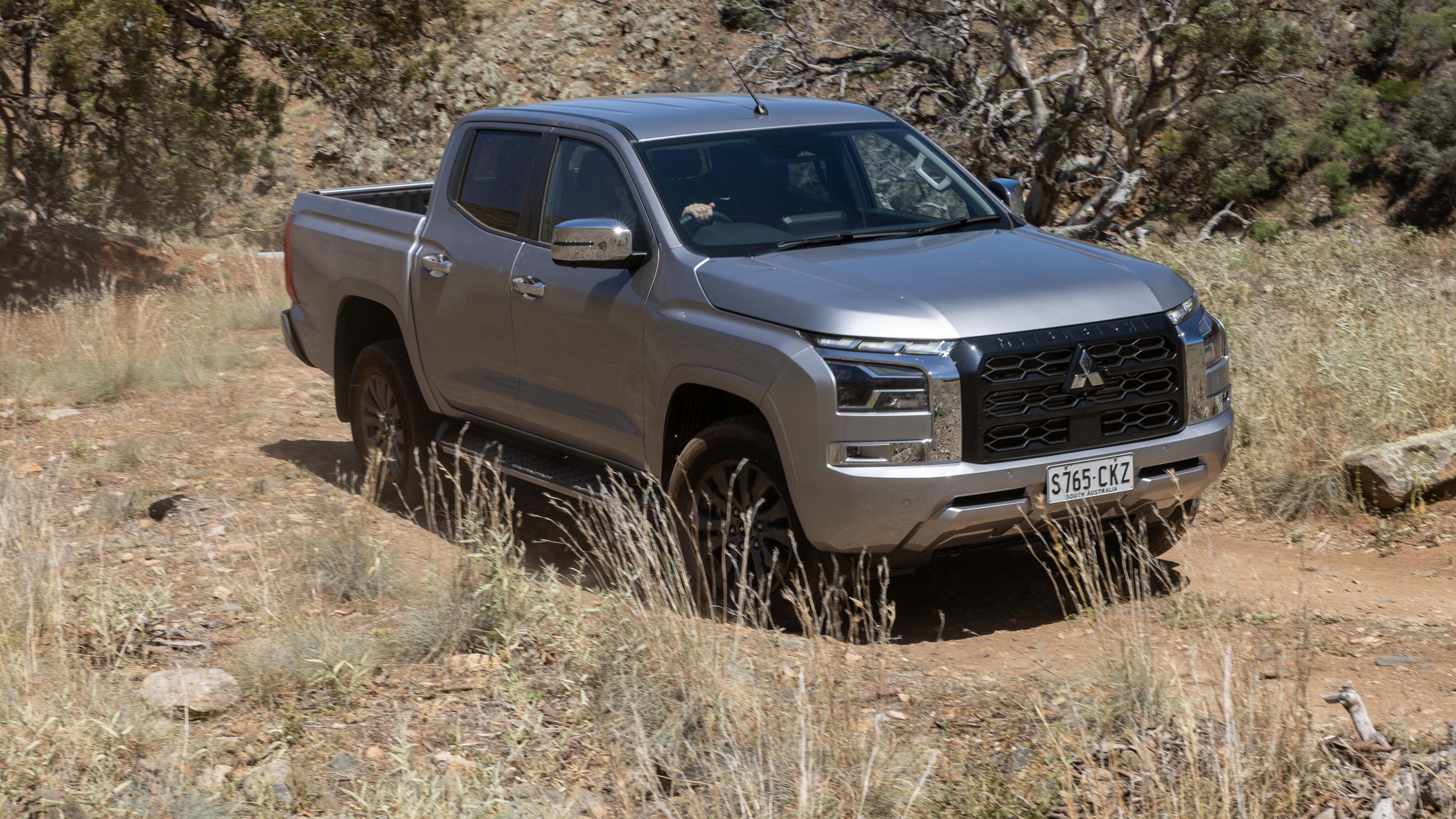
Paying more again for the GLS Leather option adds:
| In addition to GLS | |
|---|---|
| Black leather upholstery | Power-adjustable driver’s seat |
| Heated front seats | |
The GSR, the most expensive version, comes with a few aesthetic differences, including:
| In addition to GLS Leather | |
|---|---|
| 18-inch alloy wheels (black) | Roof rails |
| Leather upholstery with orange stitching | GSR-specific carpet floor mats |
| Body-coloured grille | Two dash-mounted cup holders |
| Wheel arch moulding | ‘Dark titanium’ interior accents |
| Styling bar | |
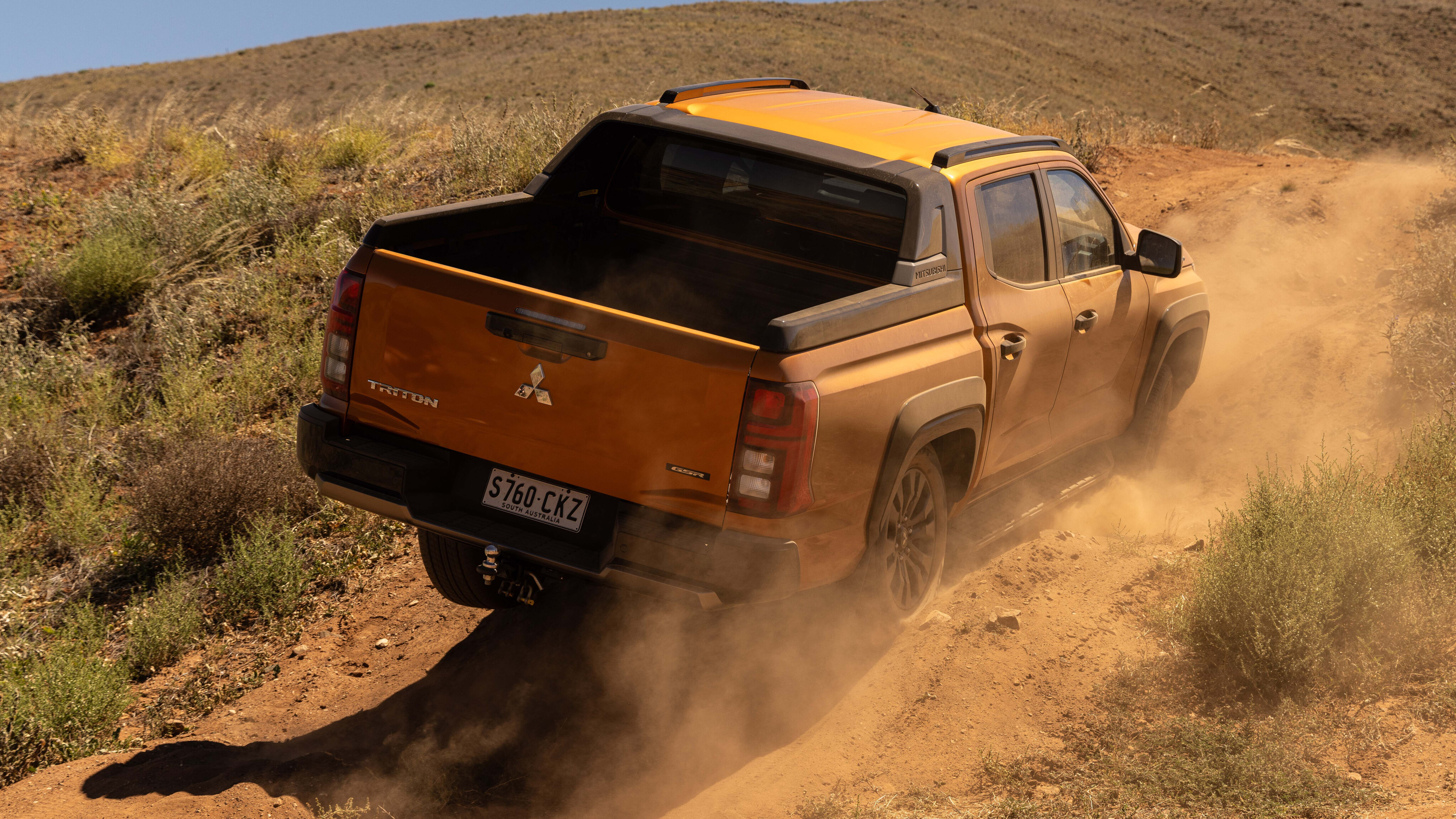
How safe is the Mitsubishi Triton?
The sixth-gen Triton received a five-star ANCAP safety rating in April 2024, becoming the first dual-cab ute to receive full marks under new, stricter testing criteria.
ANCAP gave the Triton scores of 86 per cent for adult occupant protection; 89 per cent for child occupant protection; 74 per cent for vulnerable road user protection; and 70 per cent for Safety Assist.
ANCAP noted that while the Triton’s Autonomous Emergency Braking (AEB) system can detect and respond to other vehicles, pedestrians, cyclist and motorcyclists, it doesn’t have the capability of more advanced AEB systems to avoid a crash at a T-bone intersection or a head-on collision.
The Mitsubishi Triton has eight airbags including: dual front, side chest, side head, centre and one for the driver’s knee. The five-star result applies to all 2WD and 4WD dual-cabs variants on sale in Australia.

| 2024 Mitsubishi Triton active safety features | |
|---|---|
| Autonomous emergency braking (vehicle, pedestrian, cyclist, junction-turning) | Driver monitoring camera |
| Lane-keep assist | Driver attention alert |
| Lane departure warning | Multi-collision braking |
| Lane change assist | Traffic sign recognition |
| Blind-spot alert | Intelligent speed limit assist |
| Front and rear cross-traffic alerts | Automatic high beam |
| Adaptive cruise control | |
How comfortable and practical is the Mitsubishi Triton?
The Triton cabin has been comprehensively updated compared to the previous generation.
The base-spec GLX and GLX+ variants are equipped with a 9-inch infotainment system that features Apple CarPlay and Android Auto (only CarPlay is wireless); two front and two rear USB ports (A and C) for dual-cab models; vinyl flooring; cloth seating; and ample storage bins and pockets.
Step up to the GLS and the interior benefits from dual-zone climate control; LED lighting; an auto-dimming rear-view mirror; keyless entry and push-button start; a wireless phone charger; and soft-padded interior surfaces with silver-accented stitching. Plus the tray is no longer naked and comes equipped with a bed liner. A GLS Leather model, rather unsurprisingly, adds black leather upholstery, heated fronts, and a power-adjustable driver's seat.
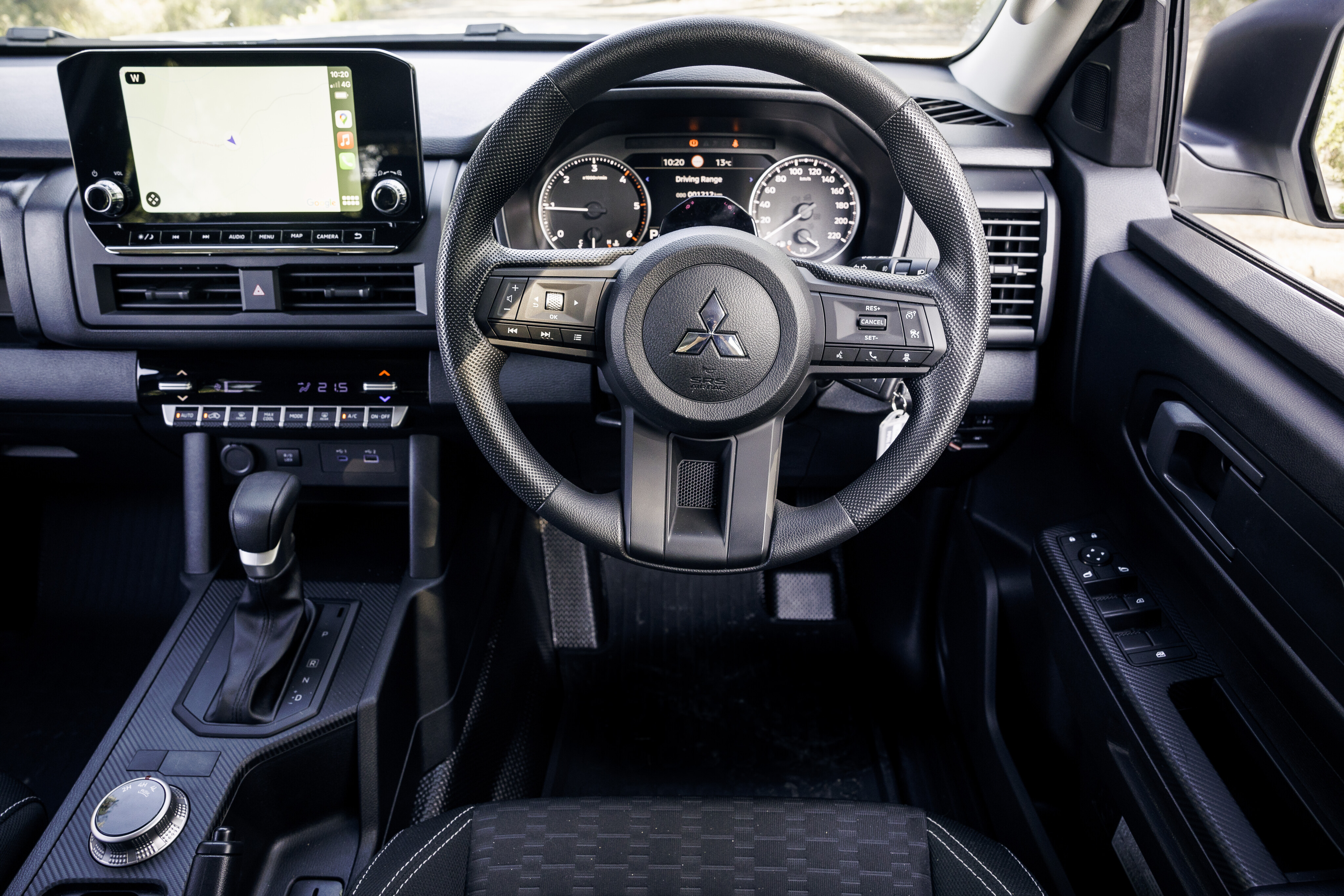
Upgrading to a top-spec GSR gets the buyers a few more interior goodies including leather upholstery with orange stitching; GSR-specific carpet floor mats, two dash-mounted cupholders, and dark titanium accents throughout the cabin.
The cloth upholstery (available in GLX and GLS trims) is comfortable, but the leather (offered in GLS leather and GSR trims) is not only easier to clean but also adds a touch of class.
The new Triton matches competitors with a 3500kg braked towing capacity and proves its workhorse credentials with the GSR model offering a 1030kg payload. All models have space for a single 1200x800mm Euro pallet in the bed. Practical features include spray-in bed liners, four tie-down points, and sports bars.
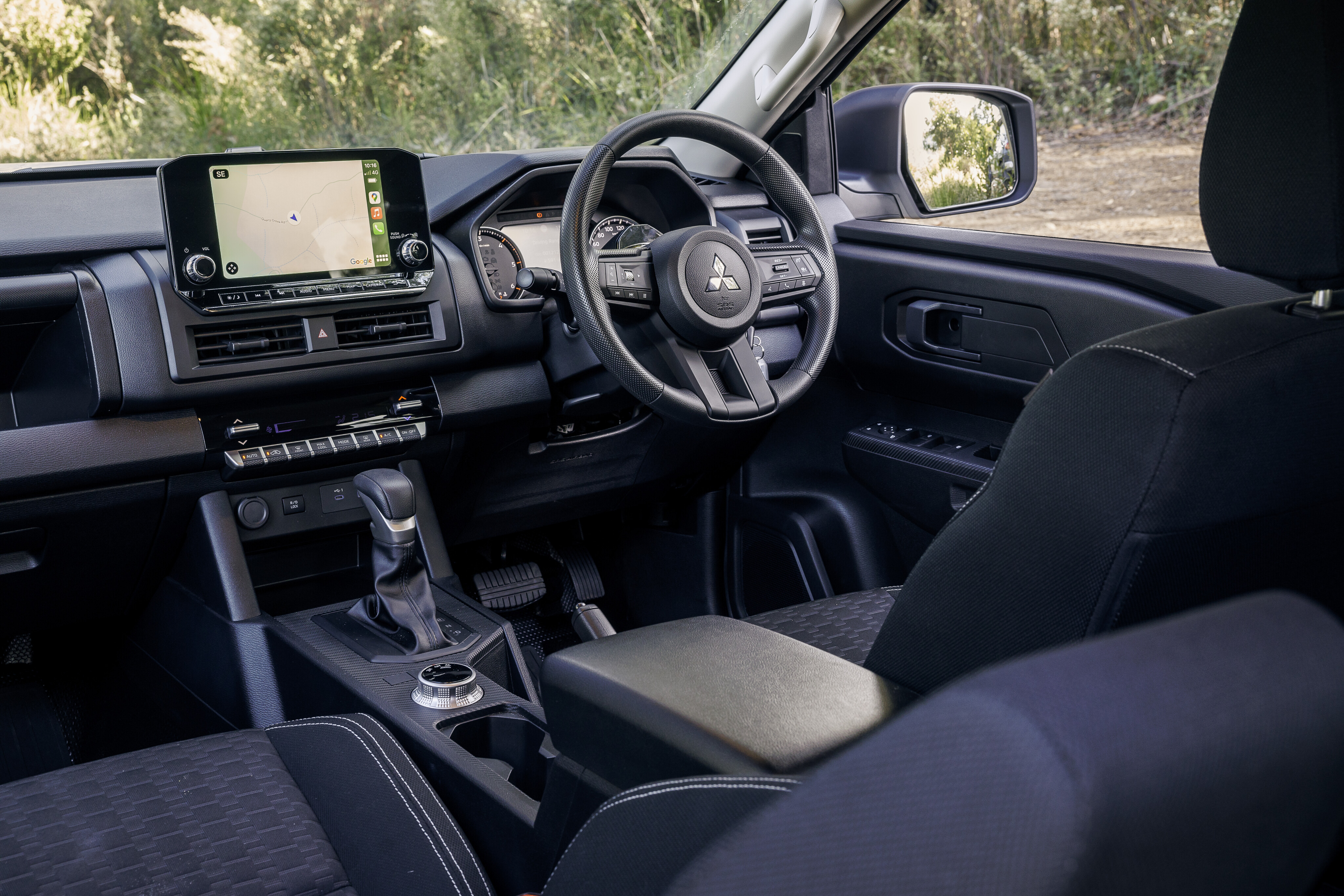
How big is the tray/tub?
The dual-cab Triton is 15mm longer and 50mm wider than the model it replaced, resulting in a larger overall profile. To this end, the tray has grown by 35mm in length (to 1555mm) and measures 1545mm at its widest point.
A new rear axle location also improves its load-lugging ability, while the load height is now 45mm lower at 820mm. Plus, the bumper has a flattened grip-taped area atop it to stand on when loading objects. The wheelbase now also extends beyond 3000mm to 3130mm, improving occupant space.
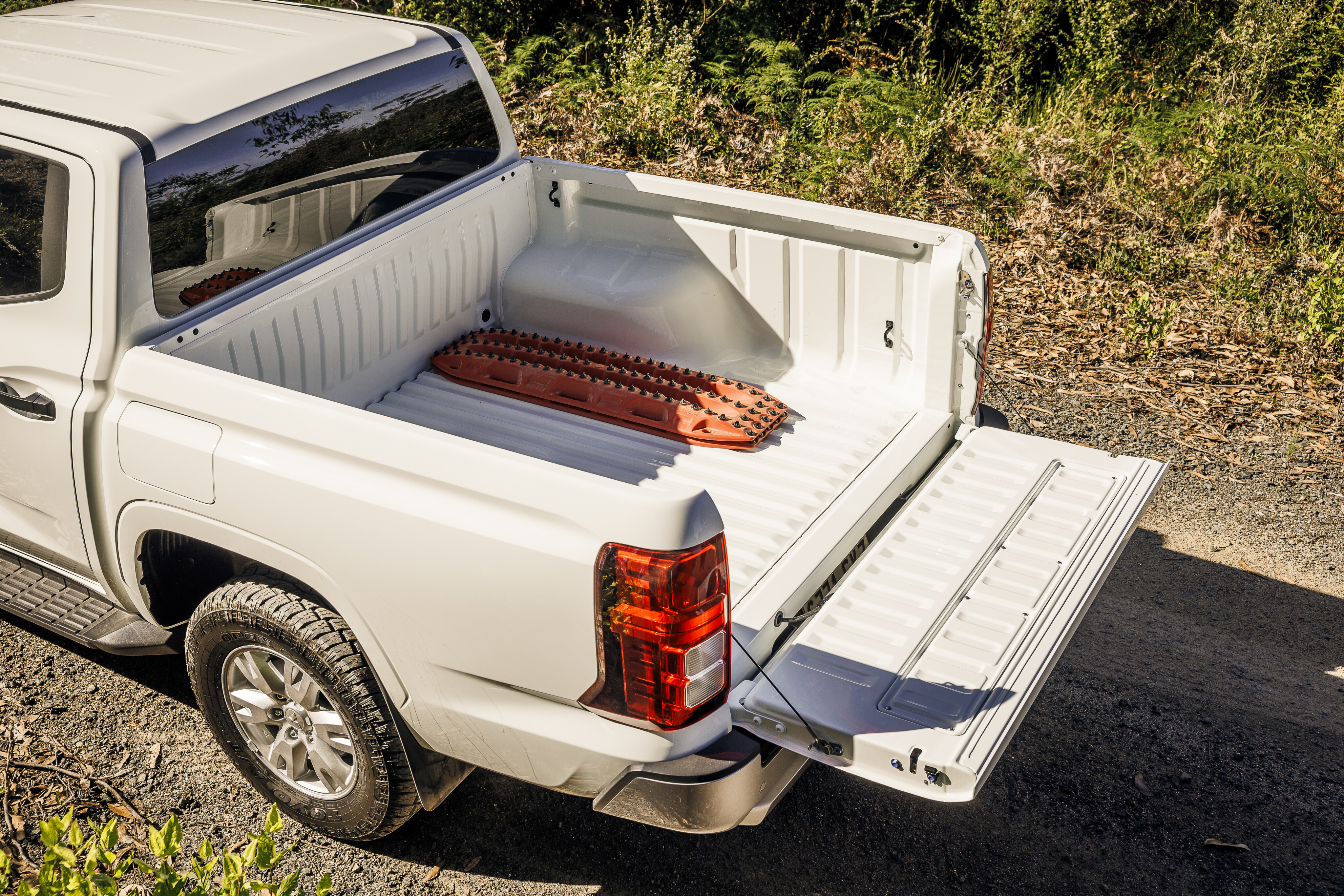
I like driving, will I enjoy this car?
The Triton's 2.4-litre diesel engine offers smooth performance, though its torque is slightly less than the Ranger's. The Triton’s twin-turbo system ensures strong torque from 1500rpm to 2750rpm, enhancing its responsiveness. An idle-stop system is included to save fuel, but our reviewers have stated that it can operate roughly, affecting the driving experience.
The Triton’s engine is somewhat noisy compared to competitors, and the six-speed automatic transmission can be overly aggressive in its shift patterns. The part-time 4x4 system in the GLX works well, but the full-time 4x4 system in GLS and GSR models offers additional convenience.
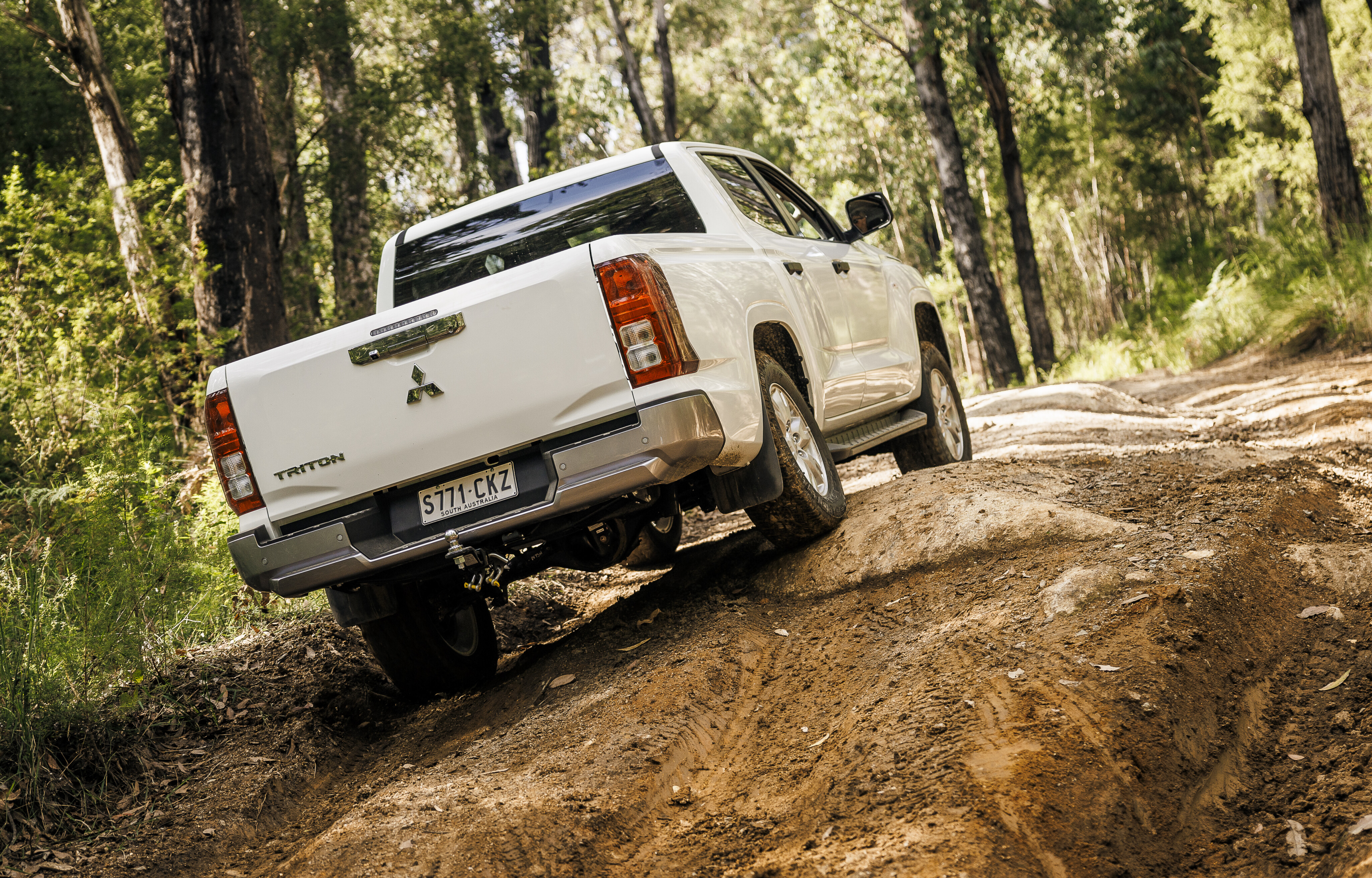
The Triton’s ride quality is commendable on hilly terrain. Its 3.3-turn lock-to-lock electric power steering proves effective, providing light handling at low speeds and stable control at higher speeds. Despite the rear drum brakes, braking performance is also satisfactory.
The Triton also handles off-road conditions well, with the traction control system managing moderate moguls without needing the rear diff lock. The Triton’s Super Select II 4WD system, available in GLS and GSR trims, offers permanent four-wheel drive and multiple modes (Normal, Eco, Gravel, Snow, Mud, Sand, and Rock), adapting the vehicle to different terrains.
The new Triton features an updated suspension, including larger dampers and a revised rear leaf spring setup, tailored for Australian conditions, and comparisons with fifth-gen Tritons showed noticeable improvements. The GLX and GLX+ models have heavier rear leaf springs for load-carrying, while higher trims offer a softer ride.
Which Mitsubishi Triton engine uses the least fuel?
All current-gen Tritons are powered by a 150kW/470Nm twin-turbo ‘4N16’ 2.4-litre turbo-diesel four-cylinder engine, lifting outputs by 17kW and 40Nm compared to the past generation.
The new Triton gets a six-speed torque converter automatic transmission, but a six-speed manual – with a new cable linkage to improve NVH suppression and lighten the shift – is slated for an arrival by the end of 2024.
Lower-spec GLX and GLX+ models feature Mitsubishi’s Easy Select 4WD system, while the upper-spec GLS and GSR get the more premium Super Select II system that allows the vehicle to be driven in 4H on all surfaces.
The 2.4-litre twin-turbo diesel (4x2) has a fuel economy rating of 7.5L/100km; while the 2.4-litre twin-turbo diesel (4x4) is slightly thirstier at 7.7L/100km. Both more efficient than its predecessor.
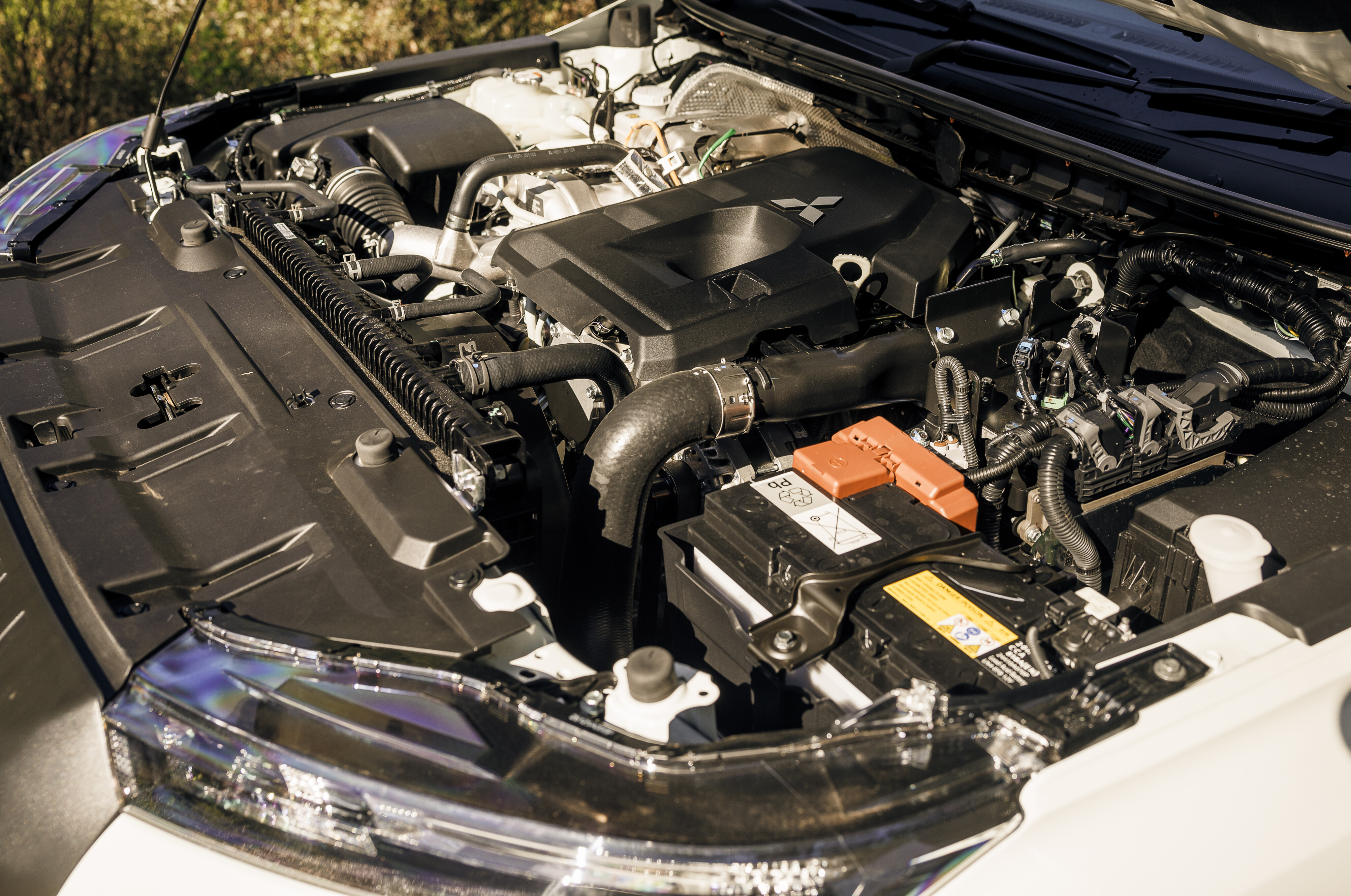
What is the Mitsubishi Triton’s towing capacity?
For this generation, Mitsubishi has fixed a nagging compromise Triton owners once had to deal with: the Triton suffered from a lower maximum towing capacity compared to its rivals.
This is no longer the case, with the Triton now rated to tow a maximum of 3500kg, which is the industry standard - that's an increase of 400kg compared to its predecessor.

How long is the warranty and what are the Triton's servicing costs?
The Mitsubishi Triton comes with the industry’s longest factory warranty – ten years / 200,000km.
The Mitsubishi Triton comes with 15,000 km / 12-month service intervals and an industry-leading 10-year capped-price servicing scheme, with the first interval priced at $489. Prices then fluctuate between $489 and $949 for the length of the servicing program.
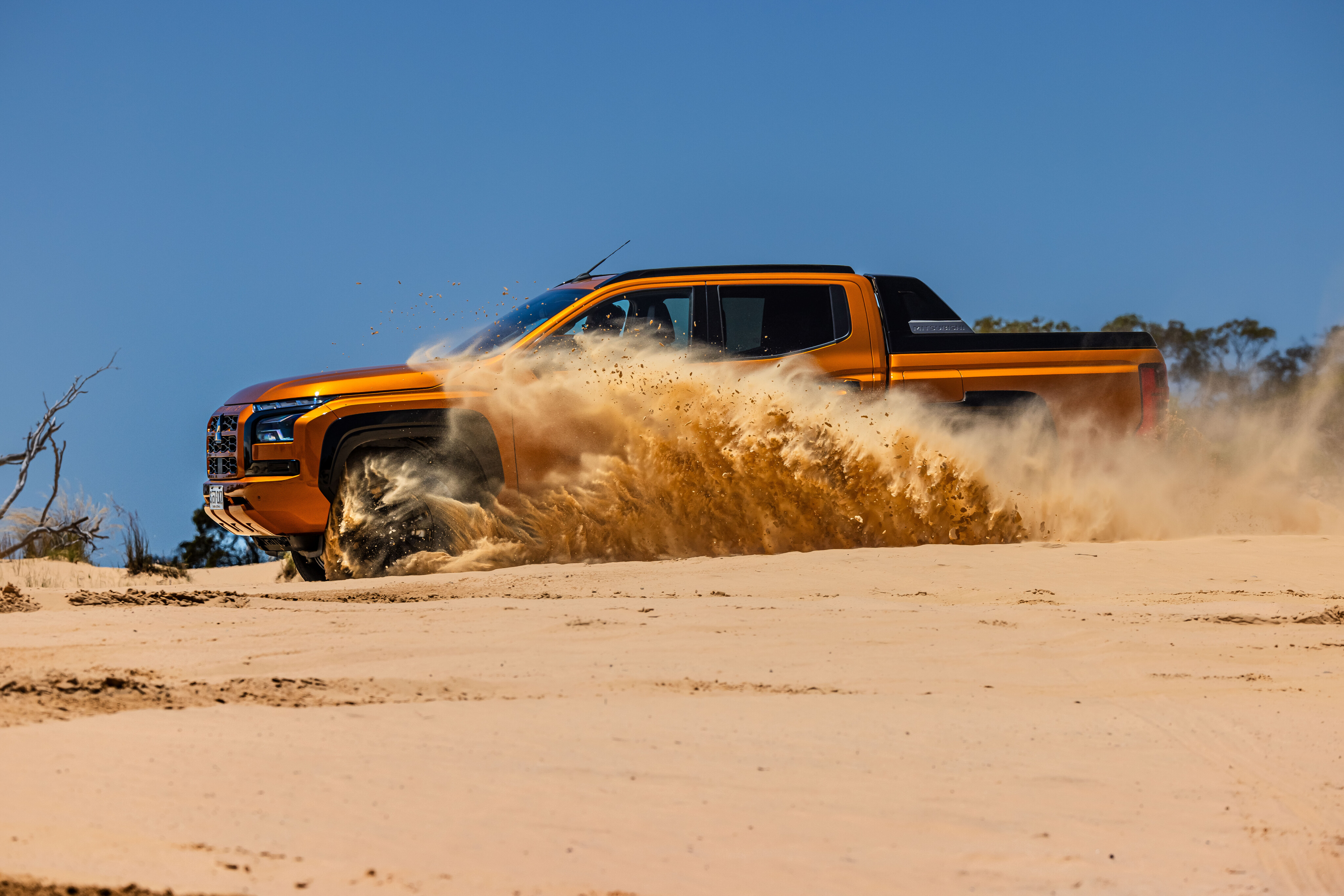
Which version of the Mitsubishi Triton does 4X4 Australia recommend?
The lower-spec Triton GLX+ sits a rung above the working-class GLX by replacing the steel wheels will alloys and adding side steps, rear privacy glass, front fog lights, some interior updates (silver stitching), and a rear diff lock.
The GLX+ 4x4 dual-cab pick-up retails for $53,290, which, at about $10,000 cheaper than the GSR, makes it the sweet spot in the range.
However, it does miss out on dual-zone climate control, as well as Mitsubishi’s Super Select II which adds full-time 4x4 to the transfer case - you'll have to make do with the more rudimentary part-time dual-range 4x4 system.
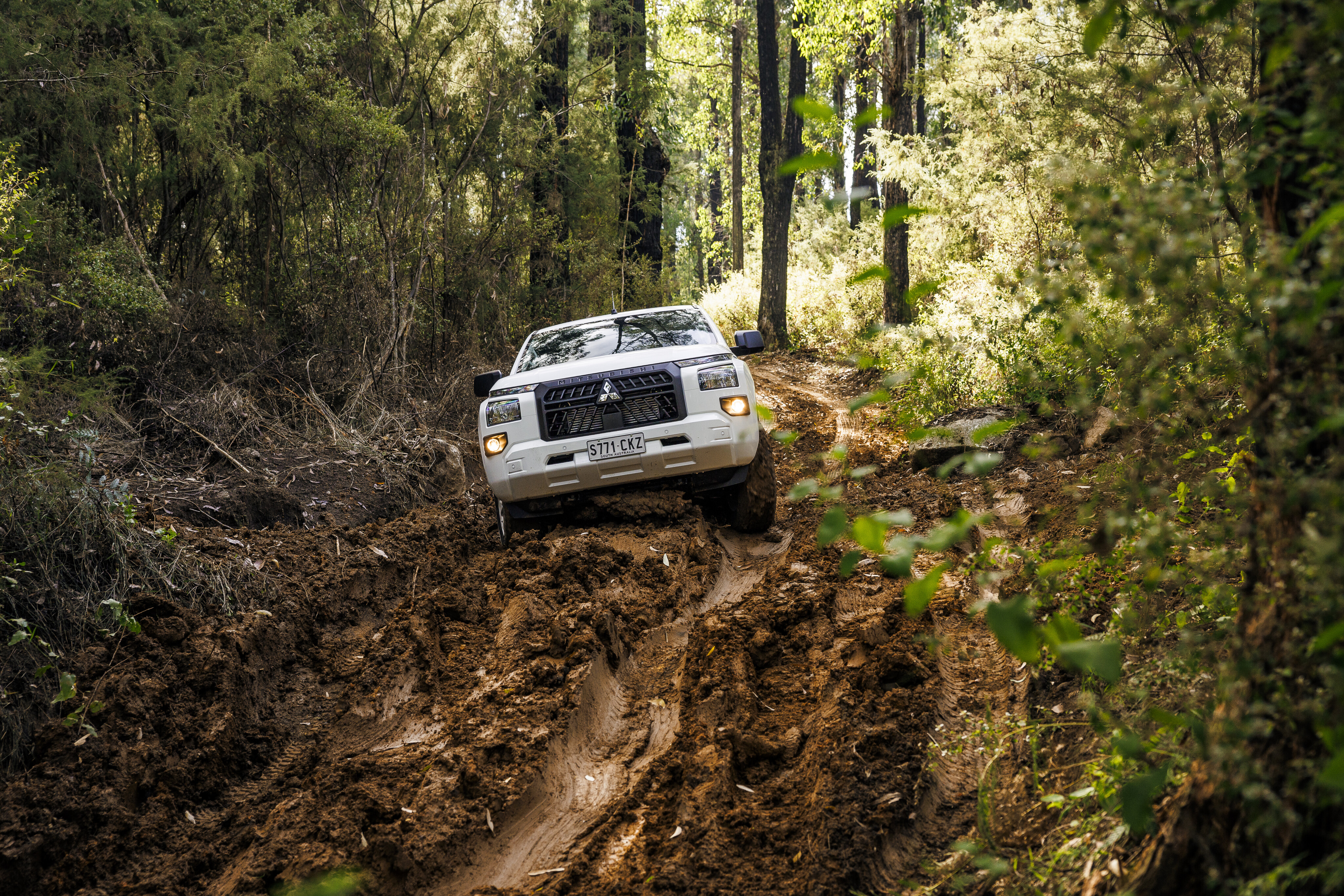
What are the Mitsubishi Triton’s key rivals?
Things we like
- Markedly improved this generation
- Good balance between on- and off-road
- Leading warranty and after-sales support
Not so much
- No longer a value alternative
- Transmission can be rough
- Driver-monitoring system (though it has been scaled back)



COMMENTS